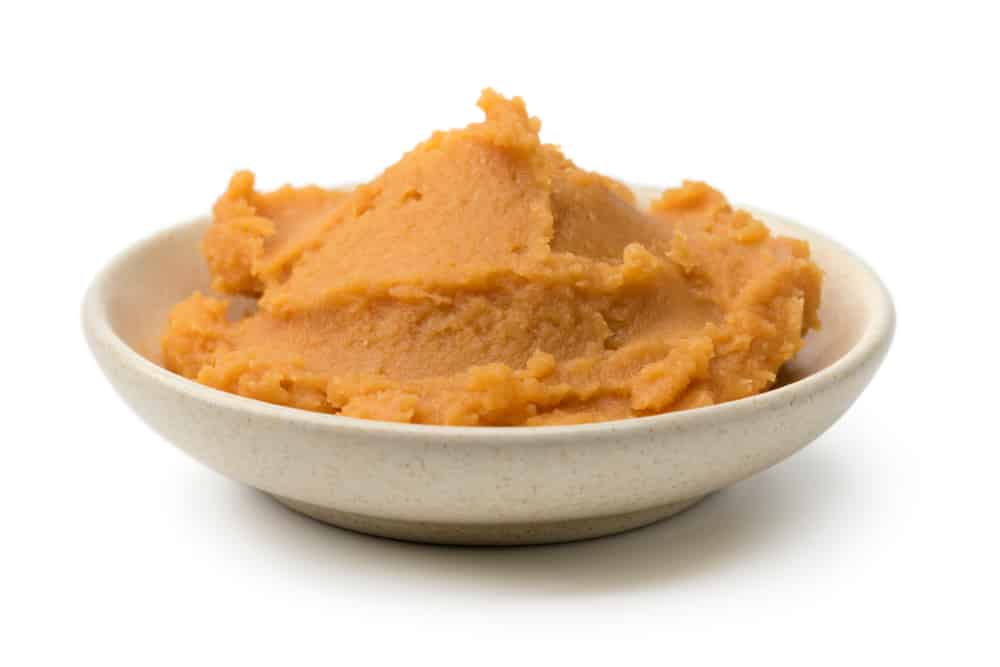
Miso is one of the most important ingredients in Japanese cuisine and many people know about it from the miso soup. However, miso is an incredible ingredient with its savory and umami notes, making it one of the most delicious additions to Japanese and Western cuisines. There are different forms of miso available, which is why we have a miso powder vs paste comparison in this article!
Miso Powder vs Paste
Miso Paste
Miso paste is a new addition to the culinary industry and it is made from fermented soybeans. The fermented soybeans are mixed up with koji and salt – koji is a well-known mold that’s used for making sake. In addition, some miso pastes also have grains, including rye, rice, or barley. This mixture is fermented for a few months or years to achieve the flavor. The longer aging and fermentation processes will make the flavor more complex and achieve a darker appearance.
One tablespoon of miso paste can add delicious umami flavor to ramen and tofu. In particular, it adds savory flavor to the food, and given the fermented seasoning, it has various probiotics and healthy bacteria that improve immunity and promises a healthier gut. There are different forms of miso pastes available, including mixed miso paste, white miso paste, and red miso paste. As the name suggests, the mixed miso paste is made by combining white and red miso paste to create a bold flavor.
The white miso paste is the lightest form and has a mild flavor while the red miso paste is made by a longer fermentation process, resulting in a saltier and more pronounced flavor. The best thing about miso paste is that it’s easy to cook with and less is more to achieve a savory and satisfying flavor (it might remind you of mushrooms and bacon). It can be added to the steak marinade or you can add it to meat marinades, particularly if you are using Asian spices and ingredients.
Many people use this paste as a flavoring – this is because it has a versatile flavor and you can create unique combinations. The paste has a thick texture, and when it comes down to the flavor, it’s a combination of salty and sweet richness to add a toasty addition. The best thing about miso paste is that you can use it as a glaze or spread, but for that, it’s better to stick with white miso paste.
Miso Powder
It’s self-explanatory that miso powder is basically miso in powdered form and it’s actually easily available in stores – it can be made at home as well. For instance, you can select the desired miso paste and bake it at low temperature for a longer time span – the oven can be set up at 180 degrees Fahrenheit. It is recommended that you spread the miso paste on the parchment paper or baking sheet, lay it on the baking tray, and put it in the oven. After two hours of baking, it will be crispy, so you can blend them in a grinder or food processor.
The miso powder is easier to use as a spice and you can easily enhance the flavor of the soup, meat, pasta, veggies, chili, and whole grains. In addition, it can be used as a soup base but it might result in a grainy texture. The miso powder has slight amounts of sodium and protein, which makes it a nutritional addition to the food but the store-bought powder won’t have this nutrition.
However, the store-bought miso powder has a longer shelf life (yes, it will last for years). It can be mixed with other ingredients to make your own Japanese seasoning, including lemon zest, tangerine zest, sesame seeds, poppy seeds, paprika, ground ginger, peppercorns, and nori sheets. The powdered form is easier to dissolve, which is why it’s great as a condiment.
It is recommended that you opt for 100% authentic powder to make sure there are no flavor enhancers or artificial flavors because it disturbs the authenticity of the flavor. While you can add it to the soup for adding the miso flavor, it can be used as a seasoning and you can simply coat your fish in this powder. As far as the flavor is concerned, miso powder has umami, tangy, salty, earthy, and savory flavors. Lastly, it tends to have a coarse texture!